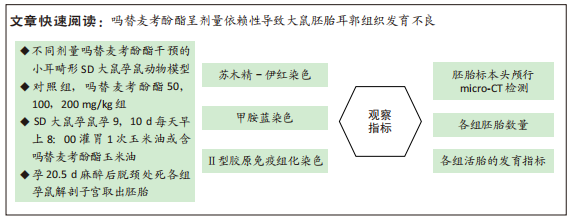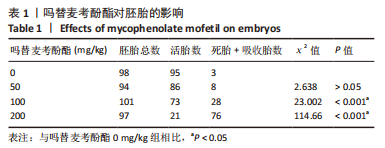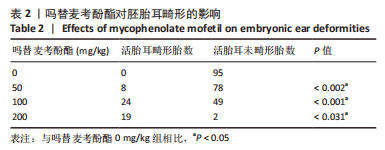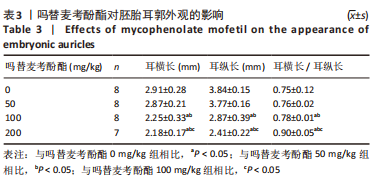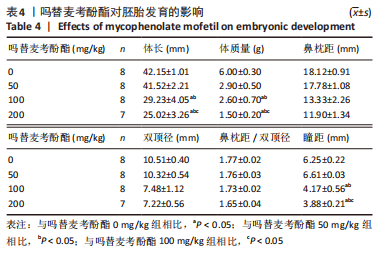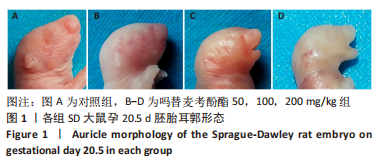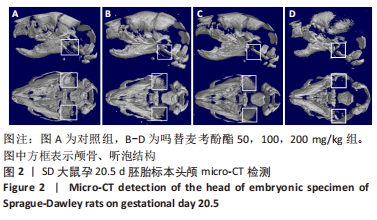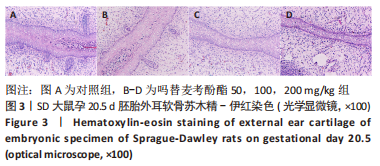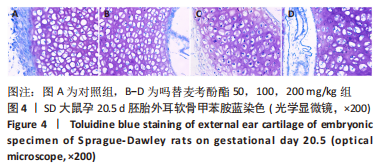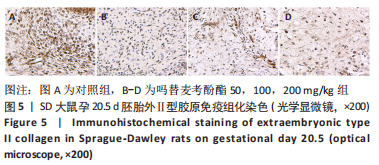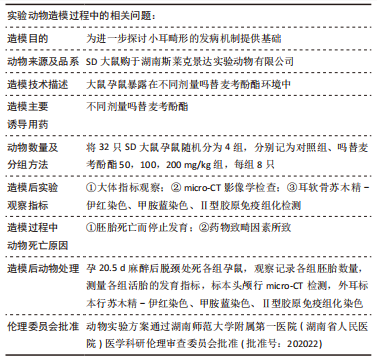[1] 吗替麦考酚酯在自身免疫病治疗中应用的风湿病专家共识小组.吗替麦考酚酯在自身免疫病治疗中应用的风湿病专家共识[J].中华风湿病学杂志,2019,23(7):436-440.
[2] CONTI F, CECCARELLI F, PERRICONE C, et al. Mycophenolate mofetil in systemic lupus erythematosus: results from a retrospective study in a large monocentric cohort and review of the literature. Immunol Res. 2014;60(2-3):270-276.
[3] 岳瑞珍,李素领.自身免疫性肝炎中西医诊疗进展[J].中西医结合肝病杂志,2021,31(12):1146-1149.
[4] BENATAR M, ROWLAND LP. The muddle of mycophenolate mofetil in myasthenia. Neurology. 2008;71(6):390-391.
[5] SALZMANN J, LIGHTMAN S. The potential of newer immunomodulating drugs in the treatment of uveitis: a review. BioDrugs. 2000;13(6):397-408.
[6] TULLUS K, MARKS SD. Vasculitis in children and adolescents: clinical presentation, etiopathogenesis, and treatment. Paediatr Drugs. 2009; 11(6):375-380.
[7] RICCI G, DONDI A, PATRIZI A, et al. Systemic therapy of atopic dermatitis in children. Drugs. 2009;69(3):297-306.
[8] 杨晓华,何乐人.先天性小耳畸形患者颅颌面发育异常的研究进展[J].中国医疗美容,2022,12(2):65-69.
[9] 陆楠,李冬梅.面部畸形患儿心理健康状态的研究进展[J].国际眼科纵览,2016,40(3):206-212.
[10] 郭蕊,王冰清,刘暾,等.小耳畸形及其伴发畸形的临床流行病学研究[J].中华耳科学杂志,2022,20(3):409-416.
[11] DENG K, DAI L, YI L, et al. Epidemiologic characteristics and time trend in the prevalence of anotia and microtia in China. Birth Defects Res A Clin Mol Teratol. 2016;106(2):88-94.
[12] 赵尚华,康深松.先天性小耳畸形耳廓支架的研究进展[J].中国美容医学,2019,28(10):170-173.
[13] 王爽,何乐人,杨锦秀,等.耳后双蒂扩张皮瓣法耳廓再造术[J].中华整形外科杂志,2022,38(1):58-63.
[14] BRENT B. The correction of mi-rotia with autogenous cartilage grafts: I. The classic deformity. Plast Reconstr Surg. 1980;66(1):1-12.
[15] 刘铮,王喜梅,李志斌.自体肋软骨Nagata法耳廓再造术对再造耳廓皮肤敏感度的影响[J].中国美容医学,2021,30(8):49-53.
[16] 庄洪兴,蒋海越,潘博,等.先天性小耳畸形的皮肤软组织扩张器法外耳再造术[J].中华整形外科杂志,2006,22(4):286-289.
[17] 李高峰,谭军,罗滔,等.耳后延迟皮瓣自体肋软骨支架法外耳再造术[J].中华医学美学美容杂志,2014,20(4):241-244.
[18] LI G, ZHANG F, DING W, et al. A New Microtia Reconstruction Method Using Delayed Postauricular Skin Flap. Plast Reconstr Surg. 2017;139(4):946-955.
[19] SIEGERT R, MAGRITZ R. Otoplasty and Auricular Reconstruction. Facial Plast Surg. 2019;35(4):377-386.
[20] 刘怡伶.先天性小耳畸形术后皮瓣破裂或坏死的危险因素及护理对策[J].青岛医药卫生,2021,53(5):392-394.
[21] MARTÍN MC, CRISTIANO E, VILLANUEVA M, et al. Esophageal atresia and prenatal exposure to mycophenolate. Reprod Toxicol. 2014;50:117-121.
[22] ALSEBAYEL MM, ABAALKHAIL FA, ALSEBAYEL FM, et al. Congenital Esophageal Atresia and Microtia in a Newborn Secondary to Mycophenolate Mofetil Exposure During Pregnancy: A Case Report and Review of the Literature. Am J Case Rep. 2018;19:523-526.
[23] ANDERKA MT, LIN AE, ABUELO DN, et al. Reviewing the evidence for mycophenolate mofetil as a new teratogen: case report and review of the literature. Am J Med Genet A. 2009;149A(6):1241-1248.
[24] PEREZ-AYTES A, MARIN-REINA P, BOSO V, et al. Mycophenolate mofetil embryopathy: A newly recognized teratogenic syndrome. Eur J Med Genet. 2017;60(1):16-21.
[25] MASTRANGELO S, SOTTILE G, SUTERA AM, et al. Genome-wide association study reveals the locus responsible for microtia in Valle del Belice sheep breed. Anim Genet. 2018;49(6):636-640.
[26] HE S, ZHANG Z, SUN Y, et al. Genome-wide association study shows that microtia in Altay sheep is caused by a 76 bp duplication of HMX1. Anim Genet. 2020;51(1):132-136.
[27] DIMOPOULOU M, VERHOEF A, PENNINGS JLA, et al. Embryotoxic and pharmacologic potency ranking of six azoles in the rat whole embryo culture by morphological and transcriptomic analysis. Toxicol Appl Pharmacol. 2017;322:15-26.
[28] 李学川.先天性小耳残耳软骨中Ⅱ型胶原和弹性蛋白的表达及生物力学研究[D].北京:中国协和医科大学,2006.
[29] ROMERO MANTEOLA EJ, RAVETTA P, PATIÑO GONZÁLEZ CC, et al. Congenital esophageal stenosis: diagnosis and treatment. Cases review. Arch Argent Pediatr. 2018;116(1):e110-e114.
[30] LIAN I, KIM J, OKAZAWA H, et al. The role of YAP transcription coactivator in regulating stem cell self-renewal and differentiation. Genes Dev. 2010;24(11):1106-1118.
[31] CHEN X, ZHANG R. Microtia epigenetics: An overview of review and new viewpoint. Medicine (Baltimore). 2019;98(41):e17468.
[32] 郭蕊,张玲,杨庆华.先天性小耳畸形遗传学研究进展[J].中华整形外科杂志,2019,35(5):507-512.
[33] 郭佩佩. CYP26A1基因突变与先天性小耳畸形发病的相关性研究[D].北京:北京协和医学院,2021.
[34] SCHMIDT F, ECKARDT K, SHAKIBAEI M, et al. Effects of mycophenolic acid alone and in combination with its metabolite mycophenolic acid glucuronide on rat embryos in vitro. Arch Toxicol. 2013;87(2):361-370.
[35] LAKE JI, AVETISYAN M, ZIMMERMANN AG, et al. Neural crest requires Impdh2 for development of the enteric nervous system, great vessels, and craniofacial skeleton. Dev Biol. 2016;409(1):152-165.
[36] 蒋卓远,查艳,石小峰,等.神经嵴细胞和神经嵴病及其致病机制的研究进展[J].遗传,2022,44(2):117-134.
[37] SNIDER TN, MISHINA Y. Cranial neural crest cell contribution to craniofacial formation, pathology, and future directions in tissue engineering. Birth Defects Res C Embryo Today. 2014;102(3):324-332.
[38] TRAINOR PA, TAM PP. Cranial paraxial mesoderm and neural crest cells of the mouse embryo: co-distribution in the craniofacial mesenchyme but distinct segregation in branchial arches. Development. 1995; 121(8):2569-2582.
[39] 卢毅,孙飞,王志豪,等.组织工程气管软骨再生的新策略[J].国际外科学杂志,2022,49(4):273-278.
[40] 李学川.先天性小耳残耳软骨中Ⅱ型胶原和弹性蛋白的表达及生物力学研究[D].北京:中国协和医科大学,2006.
[41] 何清义,李起鸿,许建中.两种诱导方法对去分化软骨细胞II型胶原的诱导[J].中国矫形外科杂志,2004(Z4):95-98.
|
